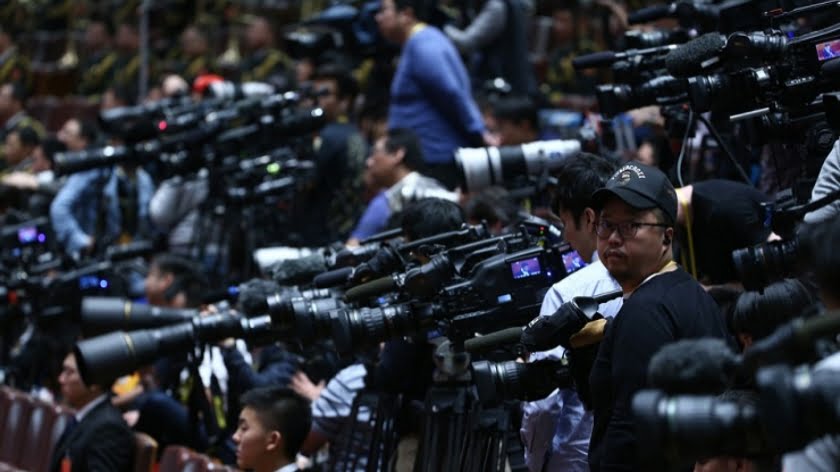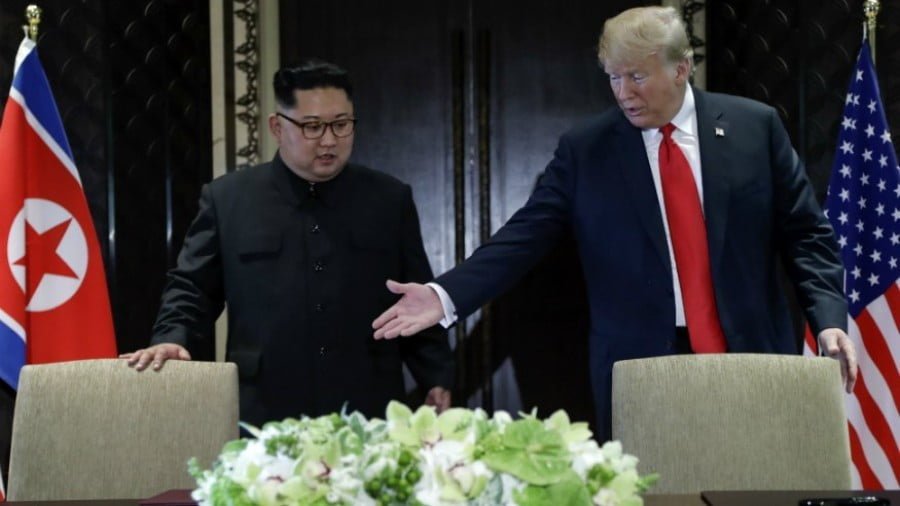China’s Media Wars: Not Your Average David Anymore
Last year, the trade war between the US and China reached an explosive phase, where even those players not participating directly in the economic confrontation, including organizations such as the EU, ASEAN and APEC, found themselves drawn into the conflict.
As claimed by the latest review of the US National Security Strategy, Washington identifies China and Russia as acute threats to the well-being of its elites. However, what is curious is that while with an abundance of clearly Russophobic figures in the world of US foreign policy, Moscow has grown accustomed to being labeled as the “bad guy,” Beijing has only received similar treatment during the presidency of Donald Trump. Is it any wonder then that Steve Bannon together with a number of prominent conservative figures have played a role in the recent revival of The Committee on the Present Danger. Back in the Cold War days this committee would come up with new ways of countering the USSR, but now it’s hell-bent on undermining China who, as its members argue, represents an existential threat to the US.
The confrontation between the United States and China has gone far beyond the realm of economics, reaching the point of both a media and military face-off.
Hence, we cannot possibly boil it down to mere tariffs described as sanctions and other economic disputes. Therefore, we’re witnessing a rivalry for global influence between Anglo-Saxon turbo capitalism and a socially-oriented Chinese model. This scenario means that no matter what agreements these two rivals manage to broker, they will all eventually be broken.
Under these conditions, the Chinese government, as part of expanding its political and economic influence, has recently begun paying special attention to increasing its influence in the media space. In fact, China’s Central Television has already created a number of channels for spreading its ideas among foreign audiences, broadcasting in French, Spanish, English and Russian for a while now. Through these media sources, Beijing is not just trying to promote its national culture and language, but has also shown that it has a rooted interest in telling its foreign audience its own version of political, economic and social events unfolding across multiple continents, thus providing a counter-balance to the Western propaganda machine.
It’s been noted that Beijing is using a variety of strategies including ramping up international broadcasting, undertaking extensive advertising campaigns, and infiltrating foreign media outlets to spread its world view. It’s curious that it has recently been revealed that the Chinese government is investing as much as 1.3 billion dollars annually to increase the global presence of Chinese media. With this investment, Chinese state-run television and radio shows have succeeded in drastically expanding their international reach in recent years. China’s Global Television Network is televised in 140 countries and China Radio International is broadcast in 65 languages.
Beijing is also spending significant sums to promote Chinese views by placing paid advertisements in Western media publications. China has recently invested up to 250,000 dollars in placing ads in leading international publications.
China is also planning to strengthen its control over the Western media space through buying stakes in major Western publications.
At the same time, Beijing’s principal goal behind these media advancements has been its attempt to improve the public image of China and its politicians upon the international stage, while gaining the ability to provide the world with a more objective outlook on internal events that are taking place within China.
Unsurprisingly, among the most effective measures in its media struggle have been injections of content prepared by Chinese nationals in foreign news publications and broadcasts. However, China is increasing its own media capabilities, as on top of the above mentioned China Radio International broadcasting in 65 languages, there’s a China Watch app available for download on mobile devices in a total of 30 states. The number of reported cases of direct or indirect pressure Beijing tried to apply on foreign media sources to prevent publications from criticizing China’s leadership increased last year as well.
To add more credibility to the information it has been promoting, China aims at strengthening coordination with leading international agencies. In particular, China Daily has recently signed agreements with at least 28 foreign publications, including the Washington Post, the Telegraph, the Daily Telegraph, in a bid to promote its China Watch app on a monthly basis, with the attributed costs reaching 900,000 dollars a year.
Against a backdrop of a noticeable reduction in the number of Western media figures operating in Africa due to massive budget cuts Western media sources face on this continent, China is rapidly expanding its media influence across there instead, while investing tens of billions of dollars in various sectors of the African economy. It’s safe to say that a lion’s share of those investments are channeled into pro-PR media sources, as Beijing is seeking ways to create in Africa a counterweight to the influence of the Western propaganda machine that Beijing says is responsible for the distorted public perception of China.
However, China is not just increasing its control over news agencies and individual journalists, as its grip over global digital infrastructure becomes tighter as well. In particular, in some regions of Africa, under the pretext of assisting in the transition from analogue to digital television, China is creating satellite and fiber-optical networks and data processing centers through private entities. Additionally, China is taking advantage of its ability to keep subscription costs low, with its digital television operator StarTimes amassing an audience of 10 million people across 30 African countries. In South Africa, through quasi-state structures China managed to get a hold of a 20% stake in Independent Media (the second largest media group in the country), which owns a total of 20 major publications. The fact that China is set to dominate the African media space is illustrated by the annual DISCOP forum held annually in Johannesburg.
Thus, in recent years, with extensive financial support provided by China, there’s been a surge of media projects in Zimbabwe, followed by the expansion of coverage ranges for major Liberian radio stations along with the digitization of Nigerian media sources. On the waves of China Radio International one can get Chinese language courses along with in-depth reports on trade and economic cooperation between China and Africa.
Beijing has also been actively infiltrating Western social media networks that remain blocked in China. Thus, the English-language channel CGTN on Facebook has 71 million subscribers, with 46 million joining it over the last couple of yeas.
The number of training courses organized by China for media figures from various countries has increased tenfold. Along with short-term training courses for foreign journalists, there’s a number of large-scale projects aimed at providing training for young specialists, primarily from developing countries. For instance, it’s expected that by 2020 Beijing will finish training a total of 1,000 professional journalists from Africa, with 500 media figures from Latin America and the Caribbean region joining such programs by 2025.
By Grete Mautner
Source: New Eastern Outlook







